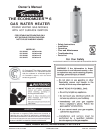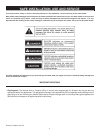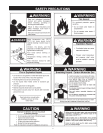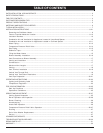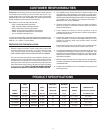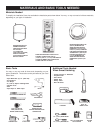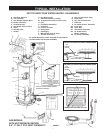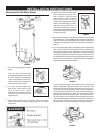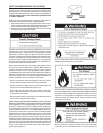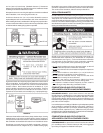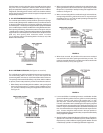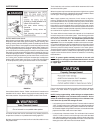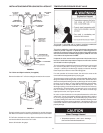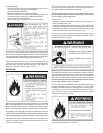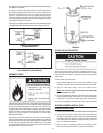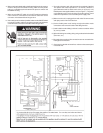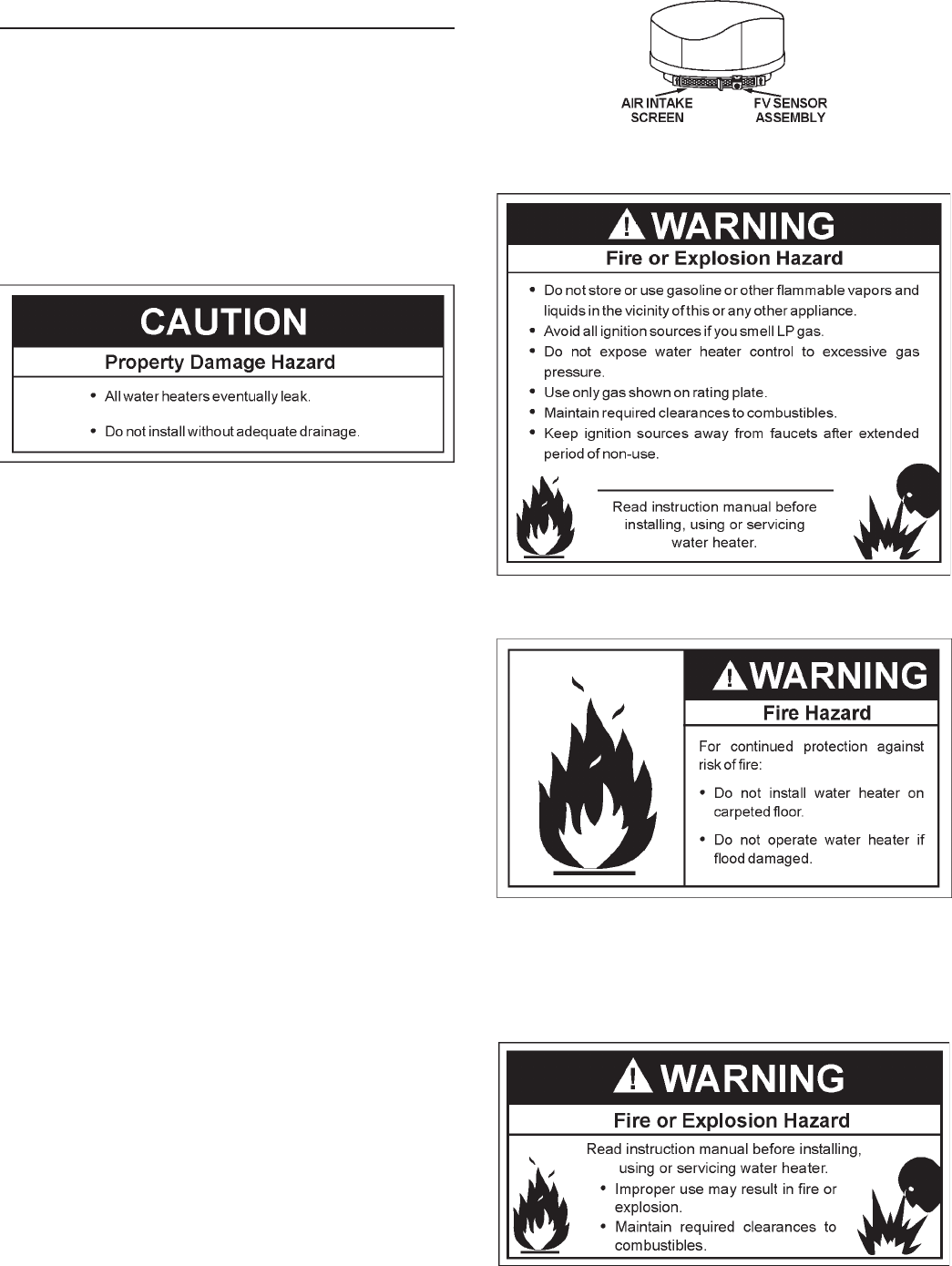
9
FACTS TO CONSIDER ABOUT THE LOCATION
Carefully choose an indoor location for the new water heater, because
the placement is a very important consideration for the safety of the
occupants in the building and for the most economical use of the appliance.
This water heater is not for use in manufactured (mobile) homes
or outdoor installation.
Whether replacing an old water heater or putting the water heater in a
new location, the following critical points must be observed:
1. Select a location indoors as close as practical to the vent terminal or
location to which the water heater vent piping is going to be connected,
and as centralized with the water piping system as possible.
2. Selected location must provide adequate clearances for servicing
and proper operation of the water heater.
Installation of the water heater must be accomplished in such a manner
that if the tank or any connections should leak, the flow will not cause
damage to the structure. For this reason, it is not advisable to install the
water heater in an attic or upper floor. When such locations cannot be
avoided, a suitable drain pan should be installed under the water heater.
Drain pans are available at your local hardware store. Such a drain pan
must have a minimum length and width of at least 2" (5.1 cm) greater than
the water heater dimensions and must be piped to an adequate drain.
The pan must not restrict combustion air flow.
Water heater life depends upon water quality, water pressure and the
environment in which the water heater is installed. Water heaters are
sometimes installed in locations where leakage may result in property
damage, even with the use of a drain pan piped to a drain. However,
unanticipated damage can be reduced or prevented by a leak detector or
water shut-off device used in conjunction with a piped drain pan. These
devices are available from some plumbing supply wholesalers and
retailers, and detect and react to leakage in various ways:
• Sensors mounted in the drain pan that trigger an alarm or turn off the
incoming water to the water heater when leakage is detected.
• Sensors mounted in the drain pan that turn off the water supply to the
entire home when water is detected in the drain pan.
• Water supply shut-off devices that activate based on the water
pressure differential between the cold water and hot water pipes
connected to the water heater.
• Devices that will turn off the gas supply to a gas water heater while at
the same time shutting off its water supply.
INSTALLATIONS IN AREAS WHERE FLAMMABLE LIQUIDS (VAPORS)
ARE LIKELY TO BE PRESENT OR STORED (GARAGES, STORAGE AND
UTILITY AREAS, ETC.): Flammable liquids (such as gasoline, solvents,
propane (LP or butane, etc.) and other substances (such as adhesives,
etc.) emit flammable vapors which can be ignited by a gas water heater’s
hot surface igniter or main burner. The resulting flashback and fire can
cause death or serious burns to anyone in the area. This water heater is
equipped with a FV sensor for detecting the presence of flammable
vapors, see Figure 8. When the sensor detects those vapors, the unit
will shut down and not operate. Should this happen, please refer to the
troubleshooting guide on pages 29-30. Even though this water heater is
a flammable vapors ignition resistant water heater and is designed to
reduce the chances of flammable vapors being ignited, gasoline and
other flammable substances should never be stored or used in the same
vicinity or area containing a gas water heater or other open flame or
spark producing appliance.
FIGURE 8.
Also, the water heater must be located and/or protected so it is not
subject to physical damage by a moving vehicle.
This water heater must not be installed directly on carpeting. Carpeting
must be protected by metal or wood panel beneath the appliance extending
beyond the full width and depth of the appliance by at least 3" (7.6 cm) in
any direction, or if the appliance is installed in an alcove or closet, the
entire floor must be covered by the panel. Failure to heed this warning
may result in a fire hazard.
Minimum clearances between the water heater and combustible
construction are 0 inch at the sides and rear, 5" (12.7 cm) from the front



